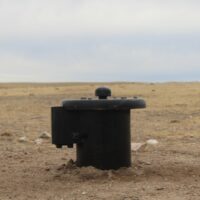Photo: Tribune file photo
WRITTEN BY
Sara Knuth, Greeley Tribune
The Windsor Town Board voted unanimously Monday to approve the second water rate increase of the year for residents as officials look to strengthen their plans to add more water supplies.
The increase will bring rates up by an additional 6.21 percent, a hike that will appear on water bills April 1. In December, the board approved an annual increase of 3.29 percent that will be reflected on the March bill.
For water users, the increase means average single-family monthly consumption charges will be about $38.37. In 2018, bills were $35.06 per month on average.
During Monday’s meeting, town board said they didn’t come to the decision to raise the rates easily.
When one resident expressed concerned about how the rate increase might impact residents, Mayor Kristie Melendez said town officials came to the decision over several meetings.
“These conversations have not just been had in a couple of months,” she said. “We recognize and are very empathetic to our community any time we raise any type of rate. This was a long and hard-thought decision.”
But Melendez said the rate is something Windsor should have addressed more than a decade ago.
Other board members agreed.
Board member Ken Bennett said the decision means the board will be able to set the town up for more water security.
